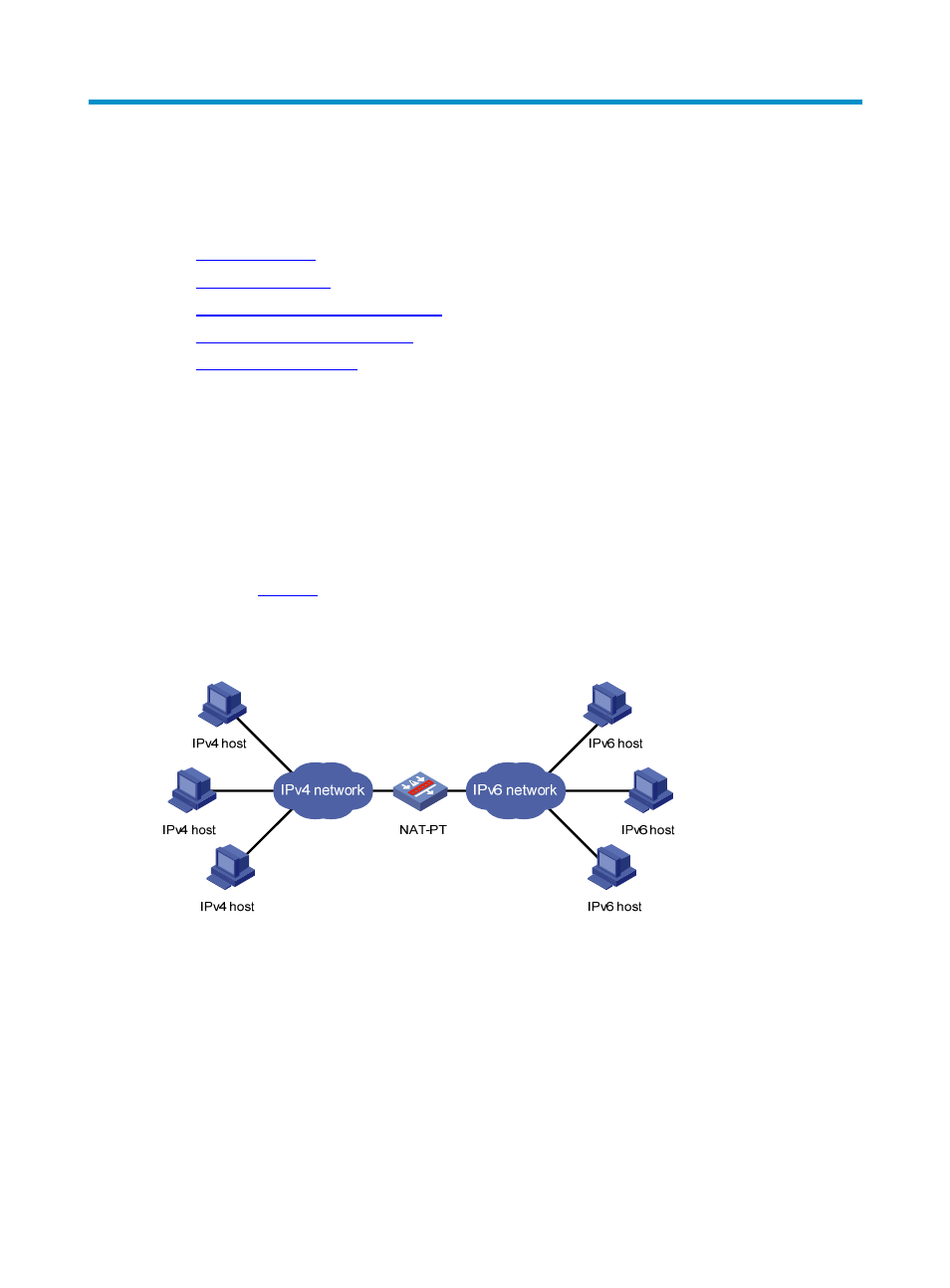Nat-pt configuration, Nat-pt overview, Application scenario – H3C Technologies H3C SecPath F1000-E User Manual
Page 186: Basic concepts, Nat-pt mechanism

1
NAT-PT Configuration
This chapter includes these sections:
•
•
•
Displaying and Maintaining NAT-PT
•
•
NAT-PT Overview
Application Scenario
Because of the coexistence of IPv4 networks and IPv6 networks, Network Address Translation – Protocol
Translation (NAT-PT) was introduced to realize translation between IPv4 and IPv6 addresses. For
example, it can enable a host in an IPv6 network to access the FTP server in an IPv4 network.
As shown in
, NAT-PT runs on the device between IPv4 and IPv6 networks. The address
translation is transparent to both IPv4 and IPv6 networks. Users in the IPv6 and IPv4 networks can
communicate without changing their configurations.
Figure 1 Network diagram for NAT-PT
Basic Concepts
NAT-PT mechanism
There are three NAT-PT mechanisms to realize translation between IPv4 and IPv6 addresses: static
mapping, dynamic mapping, and NAPT-PT.
1.
Static mapping
Static mappings are manually configured for translation between IPv6 and IPv4 addresses.
2.
Dynamic mapping
